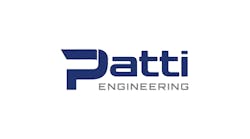To protect chemical plants and refineries from potential attacks and other incidents, Honeywell Process Solutions plans to offer other companies a program that it recently used to integrate security and process control at its Honeywell Specialty Materials facility in Geismar, La., near New Orleans.
Honeywell Specialty Materials in Geismar, La., developed and implemented a multi-layered security system that integrates its Experion PKS process control system and its Electronic Building Integrator (EBI) cyber, electronic and physical site security systems over its common distributed server architecture, and these links reportedly allow faster, more efficient responses to any adverse events.
Developed and implemented over 16 months and at a cost of $3 million, this multi-layered security system reportedly takes a holistic approach, and integrates process control, automation and security systems to reduce risk and increase safety preparedness.
"Before 9/11, security meant that I was concerned about keeping valuable tools from walking out of the plant. Now my security concerns have shifted to thinking about threats from external sources, assuring business continuity, minimizing impacts in the event of an attack, and making sure the surrounding
community is safe," said Bill Lessig, Geismar’s plant manager. "The goal at Geismar, like other chemical facilities, was to enhance safety and security to match the increased risk levels of the plant. As a chemical manufacturer and as a process control, security and building controls supplier, Honeywell was in a unique position to take a look at securing the site in an innovative way."
The program’s layers ties together the facility’s Experion PKS process control and its Electronic Building Integrator (EBI) cyber, electronic and physical site security system over its common distributed server architecture, and these links reportedly allow faster, more efficient responses to any adverse events. Current capabilities and benefits include:
- Identify and control who enters and exits the facility
- Track movements of building occupants and assets
- Control access to restricted areas
- Track and locate equipment, products, and other resources
- Track the location of personnel on site in the event of an incident
- Integrate control and security systems for greater speed and efficiency
- Protect process automation networks and systems from cyber threats
- Integrate vital waterway and dock monitoring through a radar system
- Respond proactively to alarms and events
- Share data to generate cost saving
Having the security system totally integrated with process control is what makes this project best in class. If there is ever an incident on site, everyone (security and process employees) knows about the incident in real time,” adds Lessig. “We’re now able to get the right information out to the right people quickly, and go into action immediately. This reduces risk, enhancing not only security, but safety."
Honeywell’s Geismar plant is located on the Mississippi River. The site includes 1,900 acres, and is occupied by Honeywell and four other companies. Honeywell employs approximately 275 people at the site, with another 85 contractors on site at any given time. Counting the other companies’ staffs, employment at the site is more than 1,000 people. As host, Honeywell is responsible for the perimeter security of the entire site, as well as the security of its own facility itself. Honeywell produces several chemical products at Geismar, including hydrofluoric acid, fluorocarbon refrigerants and Alcon Resin.



